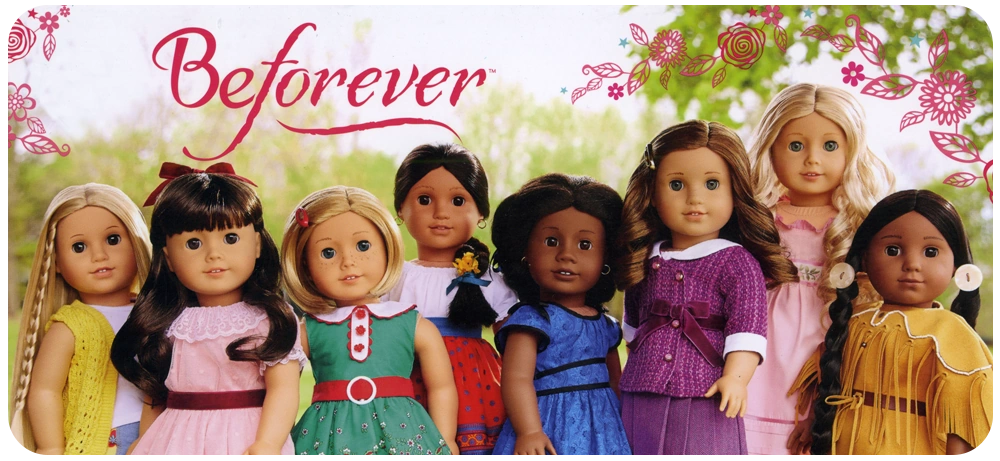
Article Read: “Marketing American Girlhood” by Elizabeth Marshall, p. 131 - 135
It was a rite of passage in my family to get an American Girl doll from the grandparents when you turned 7. Every girl on my dad’s side of the family got one. I distinctly remember ripping paper off a long rectangular box, revealing that my grandparents had bought me a Josefina doll, the one Hispanic doll sold by the American Girl brand. With her I got several books and a few accessories. I remember that, even at 7 years old (though I couldn’t articulate it), I was thrilled about having a doll that I could identify with, being Hispanic myself. Eventually I got other books that were marketed for other American Girl dolls and feeling like I learned a lot about their lives in the era they were born in and I could still probably spew some random things at you that I learned from the books. I learned a lot, right?
WRONG.
Marshall writes that “American Girl products warrant our attention and cannot be dismissed as innocent and/or innovative girlhood materials” because it is all “under the guise of education” (p. 135). American Girl, from reading the this article, I would say is very insidious in its marketing strategies and how it “teaches” girls history lessons. On the surface level, American Girl appears to be this corporation that seeks to teach girls history lessons and be able to connect to girls in history (p. 131).
But the girls are only placed in historical contexts, they do not participate in the context. Rather than participating in the history that American Girl purports to teach, the history only happens to them (if at all! Oftentimes it’s just a time period they happen to live in). And regardless of the time period, the girls are all portrayed as having “limited independence and [emphasized] ‘good girl’ behaviors” (p. 132) rather than agents of change which would empower girls of today. Rather than using passive characters, American Girl could have instead used real-life girls as their dolls who were agents of change in their era (p. 133).
In addition to the girls being passive characters in the stories, the books are subtle ads for the American Girl products through their descriptions of the things the girls own, many, if not most, of which are sold in the catalog.
Worst of all, however, is how “white-washed” the history presented in the narratives are. The books included historical information at the back for little girls to read and supposedly learn history. But the stories, specifically with Kaya and Josefina, are placed in time periods before significant conflicts between Native peoples and white people. What angered me the most (and makes me want to throw out my precious Josefina doll), is a section that Marshall quotes from the Meet Josefina book
Although Josefina would never have imagined it when she was 9 years old, she would one day
be an American-- and the cultures and traditions of the New Mexican settlers and their Pueblo
neighbors would become part of America, too (Tripp, 1997, p. 83).
ALL OF THIS IMPLIES THAT LOSING YOUR LAND AND SOVEREIGNTY IN ORDER TO BECOME AMERICAN IS A “BENEFIT.”
This is all very problematic! If we want to teach girls to be agents of change, we have to give them role models to look up to and historical contexts in which these role models participated. Otherwise, American girlhood is defined only by being passive participants to whom history happens, furthering a patriarchal society in which girls are limited players.
References
Marshall, E. (n.d.) Marketing American girlhood. In E.M. Editor & O.S. Editor (Eds), Rethinking
popular culture and media (p. 131-135) (2nd Ed.) Milwaukee, WI: Rethinking Schools, Ltd.
Tripp, Valerie. (1997). Meet Josefina. Pleasant Company Publications.
very interesting post Helen! Thanks for sharing!
ReplyDelete